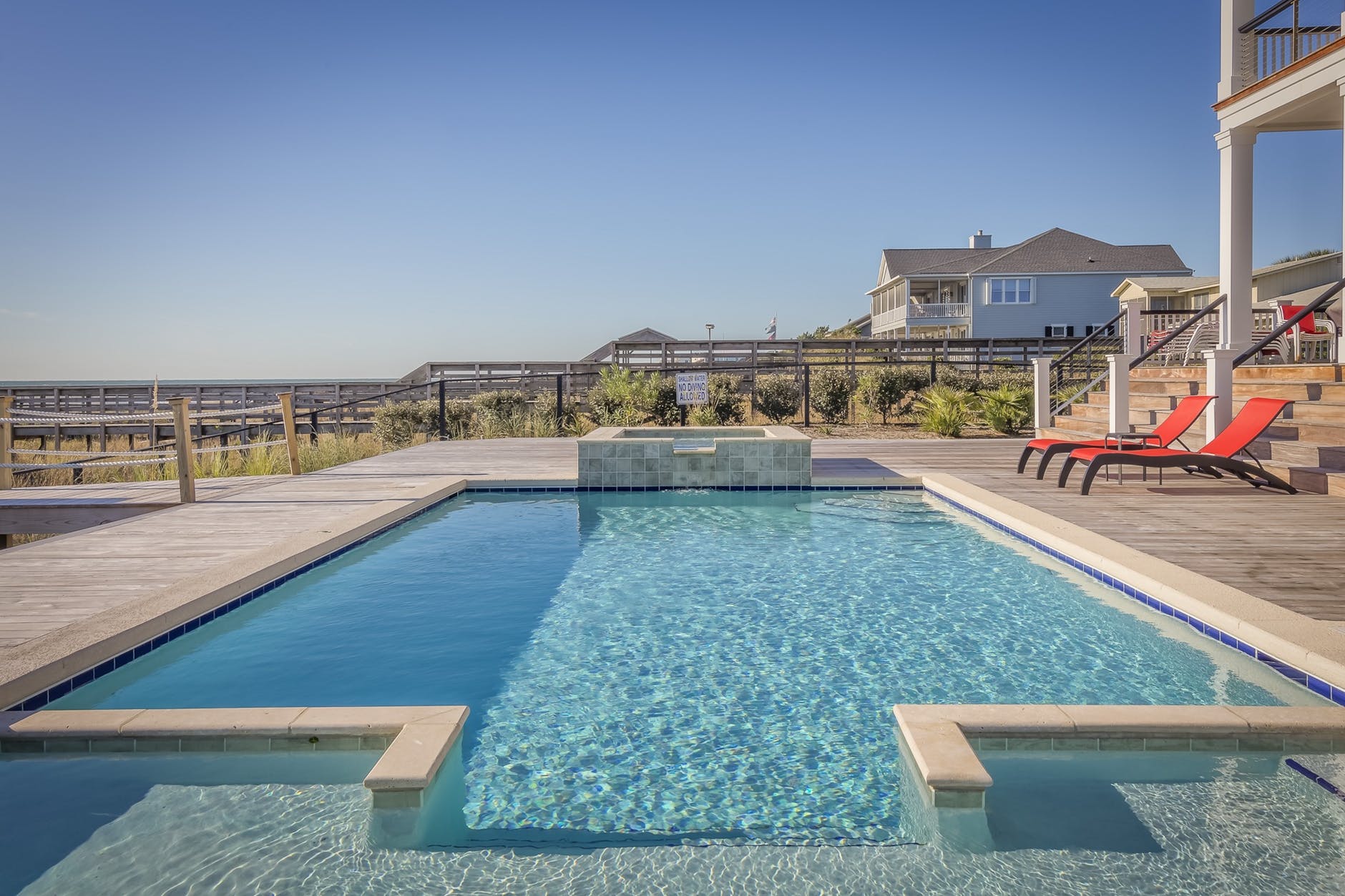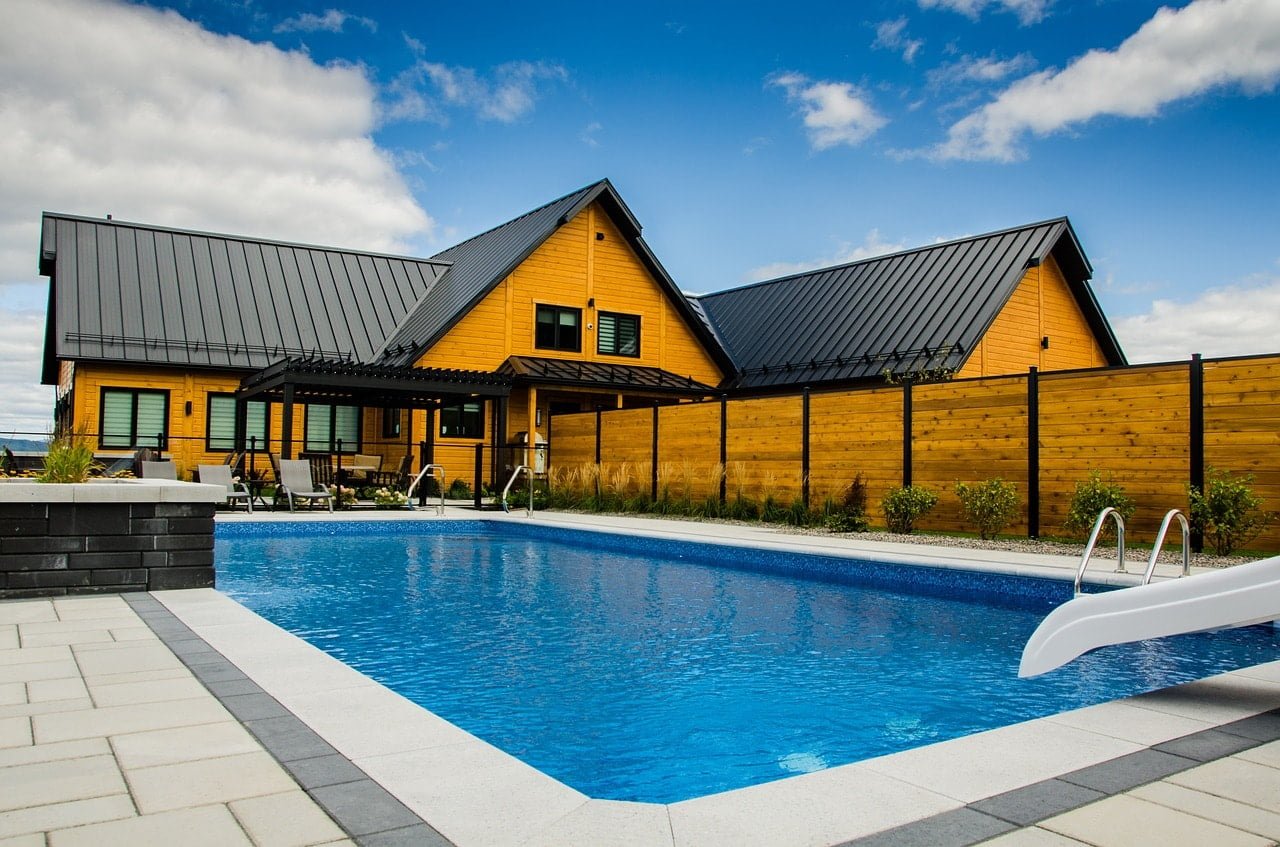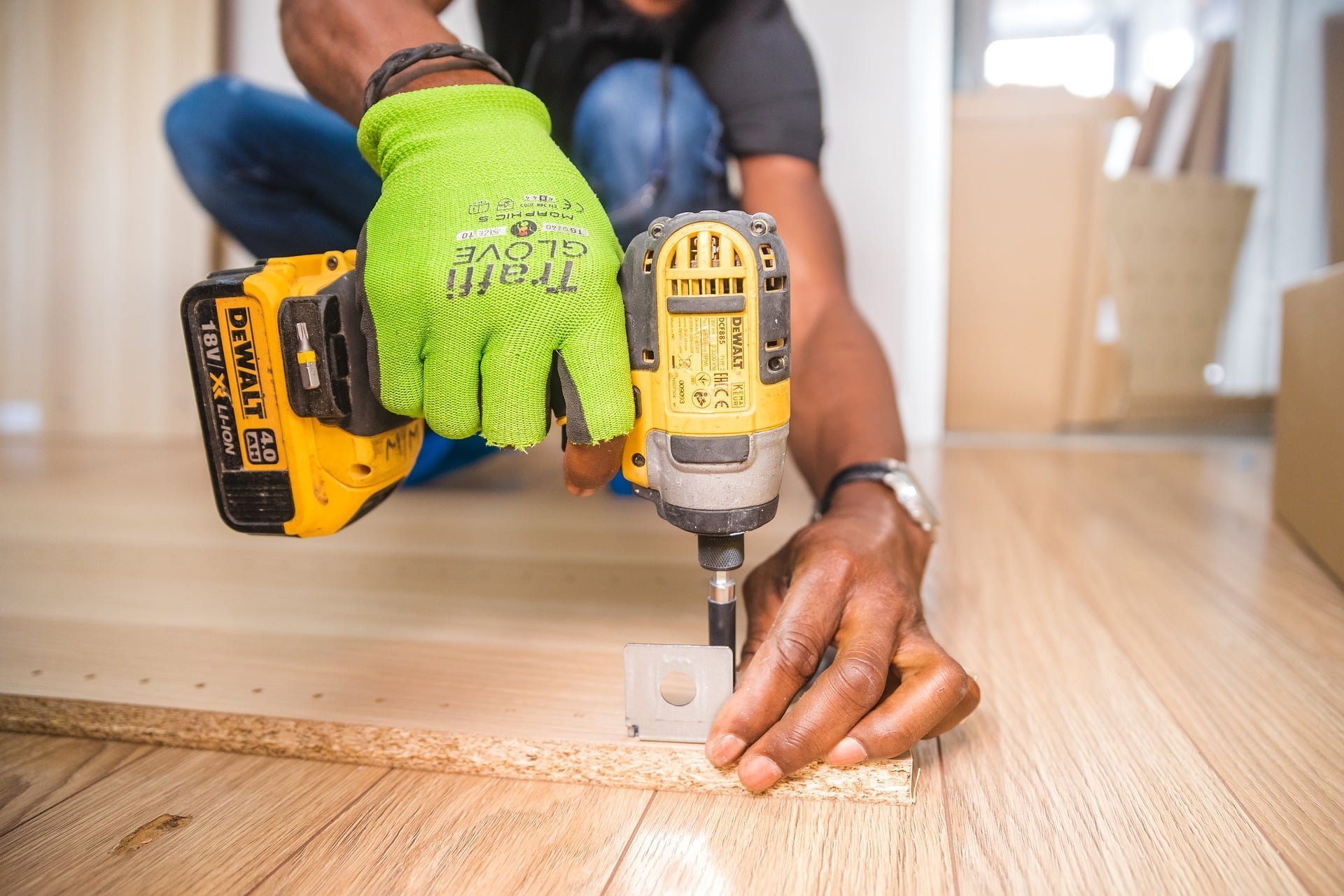A pool can be a source of entertainment, relaxation, and fitness. But with everything comes a price, and with pools, that price comes in effort and money. I’m going to over some basic pool care tips, and how to maintain your pool so that you can enjoy it with minimal effort on your part.
Pool Care Basics
Circulation
The circulation system is run by the pump. The pump is what sends the water through the filter, so that any dust, dirt, and debris can be removed. Because the pump is so important, it is important to take care of it properly. If you run the pump too long, your pump may not last as long. Your pool professional will be able to tell you how long you should run the pump with the pool size you have. For best results, you should run the pump for around 1 hour for every 10ºF of temperature.
Filtration System
The filter is another important pool feature that needs taken care of properly. This is what removes undissolved dirt and debris. In order to take care of it properly, you will need to know what type of filter you have. There are three types of filters: sand filters, cartridge filters, and diatomaceous earth filters. I’ll go over each type here, and how to take care of it.
Sand Filters will need to be cleaned every season with a filter cleaner. Sand filters are very efficient, and clean, and even better when they are slightly dirty. Therefore, they should only be cleaned when the pressure increases. You should clean it when the pressure gauge indicates a 7 to 10 lbs increase over the normal pressure. To clean, you will need to backwash them.
Cartridge Filters will need dirt removed when the pressure gauge indicates a 7 to 10 lbs increase over normal pressure. You will need to hose off the loose dirt and debris from the filter. You will then remove the cartridge, and soak it in the filter cleaner for 12 hours. That way, all oils and greases will be removed from the cartridge. Once you are done soaking it, remove it and rinse it with fresh water. For best results, allow the cartridge to dry before you install it in the filter.
Diatomaceous Earth Filters, similar to the sand filter, needs to be backwashed when the pressure indicates a 7 to 10 lbs increase over the normal pressure. You will also need to pour diatomaceous earth through the skimmer to coat the grids in the filter. The filter grids should be cleaned once every season. Also, once a year the full filter should be disassembled and cleaned well. You will also need to make sure the grids don’t have any rips or tears.
Maintenance Tips
You many have dreamed of a pool that will help you relax and provide a tranquil spot to tan, workout out, and host parties. While all of this is true, in order to achieve this dream, you will need to maintain your pool. This can take a lot of work. I’m going to give some pool maintenance tips that hopefully will make this task much simpler.
Skimming Your Pool
Debris will fall in your pool on a daily basis. If you live by trees, you will find leaves floating in the pool. But even if you don’t have any trees nearby your pool, a host of other objects may find its way to your pristine waters. Bugs and moths are common objects that need skimmed off the top of a pool regularly. It will be helpful to buy a skimmer with a pole long enough to reach all areas of your pool including the center.
Keep the Proper Chemical Balance
If your pool’s chemical balance is off, the water may look cloudy. Water that is not clear is a definite sign that chemical levels are off. Improperly balanced water can cause harm to your skin, eyes and ears.
You should ideally test your pool water every day, or at the minimum once a week. Testing the water has been made simple thanks to inexpensive test kits that you can pick up at any store that carries pool service supplies. Here are the main chemical levels that you need to keep an eye on:
Cyanuric Acid – This protects chlorine from sunlight while determining the Free Chlorine levels. A proper reading should range between 30-50.
PH Level – Also known as acidity/alkalinity. This level should be kept between 7.5 to 7.8 to prevent skin irritation and also to protect the pool equipment from erosion.
Chlorine – A cleaning agent that kills bacteria, thus keeps your pool safe from harmful germs.
Total Alkalinity – Helps to keep the PH level in balance. A proper range for alkalinity is between 60-120.
Calcium Hardness – This helps to prevent plaster damage. A proper range is 220-350, but lower for vinyl siding pools.
Routinely Shock Your Pool
Every once in awhile, it’s a good idea to add an abundance of chlorine over the normal amount to kill off all harmful bacteria. This is called shocking your pool. Shocking is done by diluting 3 to 5 times the normal amount of chlorine or other chemical sanitizer with water. It’s good to shock your pool at least twice a season.
Maintain a Proper Water Level
Water level will naturally go down due to evaporation and pool usage. Make sure that when you add water, to check on the chemical levels. Adding water may throw off your chemical levels.
Use a Tennis Ball to Absorb Oils
If you have any swimmers that wear sun tan oil, that oil will end up coming off in your pool. Oil will float to the top. A tennis ball will also float. By floating a tennis ball or two in your pool, it will absorb those oils that float to the water surface. This little tip doesn’t require any more than remembering to add in the tennis balls and then remove and clean the balls so that they can be reused for the same purpose on another day.
How to Clean the Tile
The pool tile can often become a cloudy white due to the minerals that may be in the water. These white stains can be removed with chemicals that you already use in your pool. I’ll go over the best way to get rid of these white stains here.
What You Need:
- Rubber gloves
- Eye goggles
- Respirator
- Plastic bucket
- Plastic measuring cup
- Muriatic acid
- Old plastic spoon
- Plastic spray bottle
- Non Abrasive scouring pad
To begin, move the container of muriatic acid outside so that there is enough ventilation. To be safe, wear rubber gloves, a respirator, and eye goggles before you open the container. Next, fill a plastic bucket with one gallon of water. With your measuring cup, measure 8 ounces of muriatic acid and slowly pour it into the water. Once you are done using the measuring cup, you should throw it away. Slowly stir the muriatic acid mixture with the plastic spoon. Do not stir it too quickly, for this can result in boiling. Similar to the measuring cup, dispose of the spoon as soon as you are done stirring the two ingredients.
Next, fill a plastic spray bottle with the muriatic acid mixture. Spray it onto the pool tiles, and use the non abrasive scouring pad to scrub the stains. As soon as you are done, throw away the spray bottle or label it for muriatic acid only. If you have left over muriatic acid, contact the pool supply company and ask them how to dispose it. Also, take a sample of your pool water to the pool supply company. They can find out the level of hard water in your pool, and therefore recommend chemicals to use on white stains.
How to Care for Your Pool During All Seasons
Place a Solar Blanket on It During the Winter Months
During the cold, winter months, your pool may become prone to freezing. To prevent this from happening, you will want to cover it with a blanket. Solar blankets are inexpensive, and can keep your pool from freezing during the cold temperatures. Keep in mind that solar blankets may not be enough to keep your pool hot to swim in, but it will prevent it from freezing.
Test Your Pool Water
You can test your pool water with your own testing kit. Even if it is winter, you will still want to test it since algae and bacteria can grow anytime of the year.
Clean Your Pool
During all four seasons, it is important to keep your pool clean. Chemicals, your skimmer, and a pool vacuum will all help prevent debris from clogging up pipes.
Cost to Care for a Pool
Although the cost for pool maintenance can build up, it will cost less to keep it routinely maintained than trying to fix a dirty pool problem. First, you will need to buy your pool supplies. I’ll go over what each pool care tool should cost.
Skimmer – $8
Chlorine – You can get 25 pounds for about $70, or two pounds of liquid chlorine for $7.50.
Muriatic acid – $7.70
Sodium bicarbonate – $8
Testing kit – $8
Pool vacuum – Some pool vacuums are as cheap as $20, while others are $600.
Pool Cover – $580
Filters – Some are $13, but others can cost $75.
Pool Repair Costs
Pump Motor
The pump motor should be checked regularly to make sure there are no problems. The cost for fixing the pump depends on what isn’t working. To replace the full pump, it will be around $185 for a .75hp motor and $350 for a 2.5hp motor.
Filter
Replacing the cartridge in your filter will cost between $13 to $75. The cost depends on the size of your filter. A diatomaceous earth filter will cost more, usually around $700. You will know if it needs replaced when it needs frequent cleaning.
Leaks
The cost for repairing leaks depends on where it is leaking. Your pool care professionals will be able to tell you if the leak starts at the filter or the pool. DIY vinyl liner patch kits will cost about $20, or you can hire pool care services to do if for $200. If you are using a fiberglass liner, it is best to let a pool care professional do it for you. For fiberglass repairs, it will be around $300. Concrete pools will need to be drained and sanded in order for it to be repaired properly. For concrete pools, the cost will be from $800 to $1,550.
Heater
The cost to repair a heater is about $394. However, if you do not repair the pool heater as soon as you spot a problem, the cost may go up to $1,200. When repairing a pool heater, it is best to allow your pool care professional to do it.
Pool Accessories
You will need some accessories to go along with your pool. Though all the ones that I go over are not necessary, you will need some essentials to you make your job of cleaning your pool go by with ease. You should be able to find these supplies at an pool service supply store. If you want to order online try, Indianapolis Pools/Pate’s Service and Supply. Here are some basic pool accessories to consider buying:
- Hand held skimmer – used to get debris off the surface layer of your pool.
- Pool vacuum – Will help to keep your pool bottom clean much like a house vacuum, except it’s made for water use.
- Water test kit – This is a necessary item so that you can routinely maintain safe water chemical levels.
- Chlorine – The most common cleaning chemical.
- Floats and pool toys – Now that you have your pool, floats and toys may provide some fun.
- Chemicals for shocking – Pools should be shocked with these chemicals at least twice a year.
- Sodium Bicarbonate – Basic Baking Soda.
- Algaeaside – All pool owners deal with algae caused by sunlight raised making a good environment for algae to grow. This chemical mixure kills algae.
- Pool Brush – Sometimes vacuums, skimmers and chemicals can only do so much cleaning. It may take some elbow grease to scrub away algae. A pool brush can help get the job done.
Conclusion
I hope that this article helps you keep your pool maintained with the least amount of effort involved. I’ve gone over basic pool care tips along with what you will need to keep your pool in pristine condition. Remember, that all of the time and effort that you put into your pool will all be worth it. There is nothing quite like relaxing in a well kept pool on those hot summer days.
Related Article: Best Pool Vacuum: Our Top 10 Favorites to Choose From











